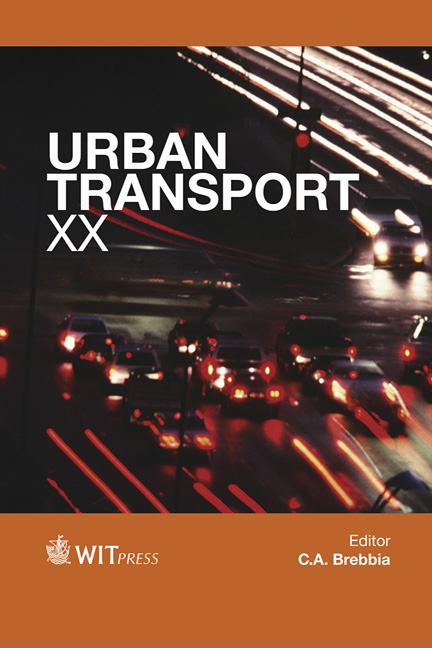The Comparison Of Regional And Urban Transit Bus Driver Distraction
Price
Free (open access)
Transaction
Volume
138
Pages
12
Published
2014
Size
451 kb
Paper DOI
10.2495/UT140081
Copyright
WIT Press
Author(s)
K. A. D’Souza & S. K. Maheshwari
Abstract
This paper compares the distraction risks and factors causing such distractions between regional and urban transit bus drivers. The objective is to ascertain if the nature and intensity of driver distraction and associated distraction factors are common at the different types of transit agencies. To establish this, an independent driver distraction study was conducted at a regional transit agency and an urban transit agency located at different areas in the Commonwealth of Virginia, USA Using accident databases and bus driver surveys, the distracting activities were classified into risk zones according to their severity. Furthermore, multinomial logistic regression models were applied to establish relationships between a set of dichotomous and continuous distracting factors and intensity of the multi categorical levels of driver distraction based on risk zones. Among the useful findings was similarity in the highest risk distracting activities for regional and urban transit bus drivers which were mainly due to passengers, pedestrians and other road users. While many of the distraction related factors such as the service area (regional/urban), driver attributes (age, gender, driving experience, educational level, marital status etc.), driving pattern (driving schedule, driving hours per week, service location etc.), and type and age of the buses were significant in either regional and urban models, there were few that impacted both the transit agencies concurrently. The reasons for the resulting differences could be due to significant variations in driver attributes, driving pattern, type and age of buses between the transit agencies. Hence, training needs and policies to curb distracted driving may differ at both agencies.
Keywords
transit bus driver distraction, analysis of transit accident databases,distraction survey of bus drivers, classification of distracting activities,application of multinomial logistic regression, Distraction Risk Index,distraction risk zone.





